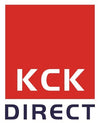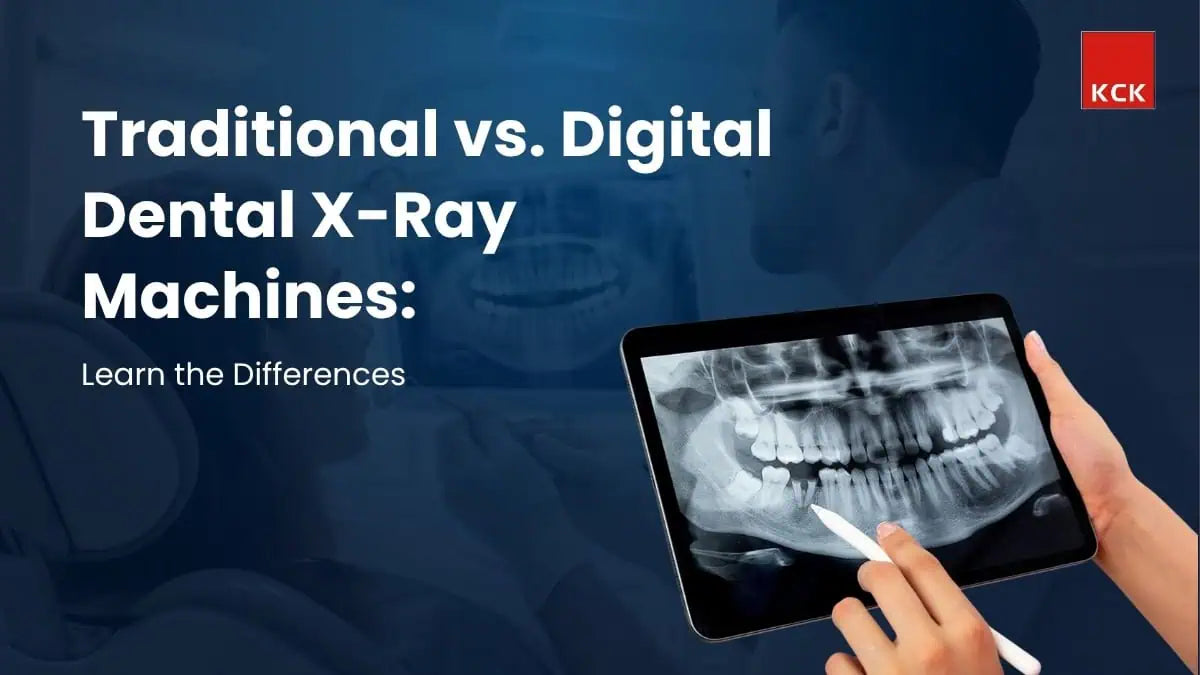Choosing the right dental X-ray machine is a big decision for any clinic. With the advent of new technology, many dentists wonder whether to stick with traditional X-rays or switch to digital ones.
Both options aid in diagnosing dental problems, but they work differently and offer distinct benefits.
In this blog, we’ll compare traditional and digital dental X-ray machines in simple terms, so you can decide which one suits your clinic best.
Let’s start with the basics.
What are Dental X-Ray Machines?
Dental X-ray machines are special tools that help dentists see what’s happening inside your teeth, gums, and jaw.
Simply put, an X-ray helps the dentist see things they can’t see just by looking in your mouth.
These machines take pictures using a small amount of radiation, showing hidden problems like tooth decay, bone loss, or infections under the gums.
Dentists use X-rays to make the right decisions about your treatment.
For example, they can check if a tooth needs a filling, determine if a root canal is healing properly, or assess whether a wisdom tooth is erupting in the correct manner.
Dr. Otto Walkhoff, a German scientist, took the first dental X-ray in 1896. But dentists didn’t start using X-rays widely until the 1950s.
However, X-rays have improved a lot over time. Today, dental X-rays are a regular part of dental care.
Dentists use them to find problems and plan treatments for different mouth issues.
As technology advanced, traditional X-rays were replaced by digital X-rays. Now, there are two main types of dental X-ray machines:
Traditional dental X-ray machines use film, just like old cameras. After taking the picture, the film goes through a chemical process to develop the image. This takes time and requires a darkroom or special equipment.
Digital dental X-ray machines use sensors and a computer. The image shows up on a screen within seconds. You don’t need film or chemicals, and the image is easy to store, zoom in on, or share with other dentists.
Both machines serve the same purpose, but the way they work and the results they offer are different.
Let’s explore these differences in detail.

Traditional Dental X-Ray Machines – How They Work
Traditional dental X-ray machines use X-ray film to capture images of your teeth and jaw. This film works like old-style camera film. When the dentist takes the X-ray, the film goes inside your mouth or behind the area being scanned. The machine then sends a small amount of radiation to create the image on the film.
Once the X-ray is taken, the film needs to be developed. This is done using special chemicals in a dark room, just like how photographs were developed before digital cameras came in. The dentist or assistant dips the film into different chemical solutions—developer, fixer, and water—one by one.
After the film is developed and dried, the image becomes visible. The dentist then looks at the film to check for cavities, infections, or bone problems. This whole process includes exposure, film development, and image reading. It will take time and needs careful handling.
While traditional X-rays are still used in some clinics, they are slowly being replaced by faster and easier digital options.
Step 1: Film Captures X-Ray Image --> Step 2: Film Is Developed Using Chemicals --> Step 3: Film Is Dried Before Viewing --> Step 4: Dentist Checks the Film Image

Digital Dental X-Ray Machines – How They Work
Digital dental X-ray machines use special sensors (like RVG) instead of traditional film. When a dentist takes an X-ray, the image appears instantly on a computer screen.
The dentist can zoom in, adjust brightness, or change contrast to see the teeth more clearly. This helps them identify problems more quickly and develop more effective treatment plans.
Digital X-rays also save time and are more comfortable for patients.

Traditional vs. Digital X-Ray: Differences
Here’s a clear comparison between traditional and digital dental X-ray machines. This table shows how they differ in important features that matter to both dentists and patients:
|
Feature |
Traditional X-Ray |
Digital X-Ray |
|
Image Quality |
The image is fixed in size and clarity. Dentists can’t zoom in or adjust it easily. |
The image is clear, can be enlarged, and adjusted for better viewing. |
|
Processing Time |
Takes several minutes. The film needs to be developed using chemicals in a dark room. |
Very fast. The image appears on the screen within seconds after taking the X-ray. |
|
Radiation Exposure |
Higher radiation compared to digital X-rays. |
Uses up to 80% less radiation, making it safer for patients, especially kids. |
|
Storage |
Requires physical space to store X-ray films. Can get lost or damaged over time. |
Stores all images on a computer. Easy to organize, access, and share when needed. |
|
Cost Over Time |
Cheaper to buy, but has extra costs for film, chemicals, and storage materials. |
Higher upfront cost, but saves money over time since there’s no film or chemicals. |
|
Eco-Friendliness |
Not eco-friendly. Uses chemicals that can harm the environment. |
Eco-friendly. No chemicals or film waste. Everything is digital. |
|
Patient Comfort |
The film may feel uncomfortable in the mouth. |
Smaller, thinner sensors make the process more comfortable for patients. |
This comparison shows that digital X-rays are faster, safer, and more convenient. While traditional X-rays still work, digital technology makes things easier for both dentists and patients.
Dental Digital X-ray Machine

When Do Dentists Still Use Traditional X-Rays?
Even though digital X-rays are becoming more common, some clinics still use traditional X-ray machines. Here are a few situations where they remain useful:
-
Clinics with limited budgets - Traditional X-ray machines cost less upfront. Small clinics may choose them to save money in the beginning.
-
In rural or remote areas, some places may not have steady electricity, internet, or access to modern equipment, so film-based X-rays work better.
-
As a backup system, some clinics keep traditional machines as a backup in case the digital system stops working or during power failures.
-
For educational purposes - In dental colleges, traditional X-rays are sometimes used to teach students the basics of radiography and film handling.
-
When internet or software access is limited, Digital X-rays rely on computers and software. In areas with weak tech support, film X-rays are more reliable.
-
For practices handling only basic diagnostics, Small dental practices that only do basic check-ups or extractions may find traditional machines enough for their needs.
-
Long-term practitioners are comfortable with film - Some senior dentists prefer using film because they’re used to it and find it easier to read without digital tools.
-
Clinics with low patient flow - If a clinic sees fewer patients, the speed and storage benefits of digital X-rays might not be as important.
-
When no training for digital tools is available, If staff are not trained in using computers or digital systems, traditional X-rays are easier to manage.
-
In areas with unreliable tech service, Maintenance for digital machines may not be easily available in all regions, making traditional options more practical.
While digital X-rays offer many advantages, traditional machines still serve a purpose in certain situations.
Confused between traditional X-rays and digital X-rays? Find out which one is right for you!
Which One Is Best for Your Dental Practice?
Choosing between traditional and digital dental X-ray machines depends on your clinic’s needs, budget, and how many patients you see every day.
If you want speed, safety, and efficiency, digital X-rays are the best choice. They give quick results, expose patients to less radiation, and make storing and sharing images easy.
Digital machines help you work faster and provide better care, especially in busy clinics with many patients.
If you run a low-volume practice or are just starting out, traditional X-ray machines may be more affordable at first. They cost less to buy and are simpler to use. However, keep in mind that traditional machines need film, chemicals, and more storage space over time, which can add to costs.
Think about your clinic space, budget, and patient load before deciding. Digital systems require computers and software, so you need space and technical support. Traditional systems need a darkroom or a film processor and storage for film.
For clinics looking for reliable, high-quality digital X-ray machines and other dental equipment, KCK Direct offers excellent products. KCK Direct provides advanced digital X-ray machines designed for safety and clear images.
We also supply a wide range of trusted dental instruments and materials to help your practice run smoothly and serve patients better.
In the end, the best choice depends on your practice’s unique needs. If you want modern technology with faster results, digital is the way to go. If you want to start small with lower upfront costs, traditional might work better for now.
Either way, investing in good equipment from trusted suppliers like KCK Direct helps you provide the best care to your patients.
FAQs
Are digital dental X-rays safer for patients?
Yes, digital dental X-rays use much less radiation than traditional X-rays. This makes them safer for patients, including children and pregnant women. At KCK, we focus on providing digital x-ray machines that keep patient safety a top priority.
Can digital X-ray images be printed or shared with patients?
Absolutely! Digital X-ray images can be printed on paper or shared easily via email or messaging apps.
Will switching to digital X-rays require new handpieces or holders?
Usually, digital X-ray machines come with their sensors and holders designed for the system. If you switch to digital, you may need new holders that fit the digital sensors.
Can I still use traditional X-ray films in a modern clinic?
Yes, you can still use traditional films if your clinic has the equipment and space for it. But most modern clinics prefer digital because it’s faster and cleaner.
Do digital X-ray machines cost more?
Digital machines usually cost more upfront than traditional ones. But over time, you save money on film, chemicals, and storage. KCK provides cost-effective digital solutions designed to give you long-term value and improve your clinic’s efficiency.
How often do digital sensors need to be replaced?
Digital sensors are durable and last several years with proper care. The replacement time depends on how often you use them and how well you maintain them. At KCK Direct, we offer high-quality sensors built to last and provide support to help you take care of your equipment.


